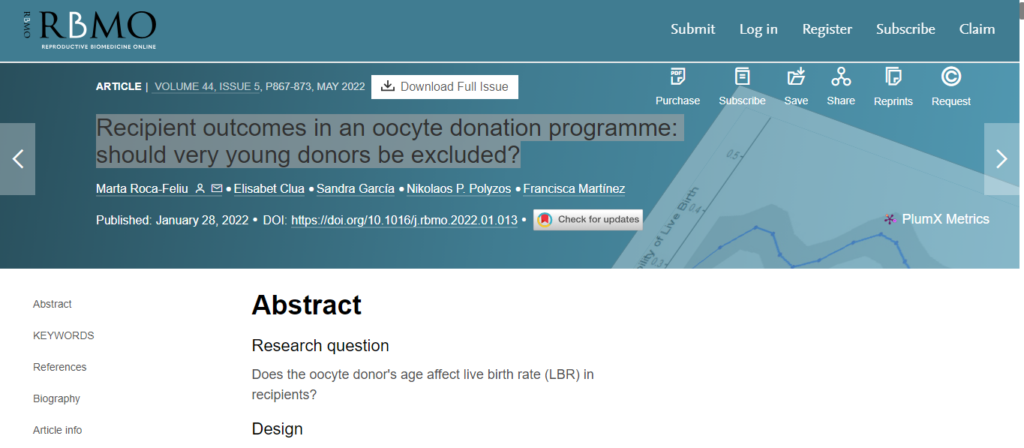Educate yourself about preeclampsia, and learn how to prevent and manage the condition.
Many people have heard of preeclampsia, but few know all the facts. According to the Mayo Clinic, preeclampsia is a complication during pregnancy characterized by abnormally high blood pressure and damage to an organ system, typically the kidney or liver. The complication usually begins after twenty weeks of pregnancy, but can sometimes occur earlier or immediately after the delivery of the baby. It is impossible to develop preeclampsia if you are not pregnant.
If preeclampsia is left untreated, it can lead to very serious — potentially fatal — complications for both the mother and the baby. For couples looking to conceive, it is important to educate yourself about the risks and symptoms of preeclampsia and to see your doctor regularly if you are pregnant.
The Dangers of Preeclampsia
Left untreated, preeclampsia can cause serious complications, sometimes leading to the death of the mother. The condition can also harm the development of the fetus. Specifically, preeclampsia blocks the transport of nutrients to the fetus. Often, the result is a baby that is small or underweight. The baby is also likely to suffer from intrauterine growth restriction (IUGR), a complication defined by an underweight baby below the tenth percentile on growth charts.
Researchers believe that preeclampsia stems from problems with the development of the placenta, the organ that delivers nutrients to the fetus. In women with preeclampsia, new blood vessels responsible for sending the blood to the placenta do not develop correctly at the outset.
Preeclampsia: Symptoms and Risks
The defining symptom of preeclampsia is high blood pressure. However, elevated blood pressure alone is not enough for a diagnosis of preeclampsia. A pregnant woman may have high blood pressure without having or being in danger of the condition.
When symptoms for preeclampsia are reported or detected, the doctor will need to order additional labs, including blood and urine tests. They will also need to monitor the patient extensively in order to obtain a positive diagnosis. With the above caveat in mind, the main symptoms of preeclampsia to look out for include:
- Elevated blood pressure.
- Protein in your urine or other signs of problems with your kidneys.
- Vomiting and nausea.
- Severe headaches.
- Pain in the upper abdomen, usually on the right side under the ribs.
- Changes in vision, including spotting, blurriness, temporary vision loss, or sensitivity to light.
- Decreased urine output.
- Difficulty breathing caused by fluid in the lungs.
- Sudden swelling and weight gain (edema).
Given that there are many possible symptoms for preeclampsia that may arise at different times — and many symptoms that are comparable to normal symptoms of pregnancy — it is critically important that you visit your doctor regularly during this time. When your doctor is familiar with you and your general pregnancy symptoms, they will be better able to detect anything that seems out of the ordinary.
Preventing Preeclampsia
While preeclampsia is rare, there are certain women who are at greater risk for the condition than others. At-risk groups include:
- First-time mothers.
- Women with a familial history of preeclampsia.
- Women older than forty or younger than twenty.
- Women carrying multiple fetuses.
- Women who are overweight or obese.
While these women are at greater risk for preeclampsia, anyone can develop preeclampsia during pregnancy. Here are some preventative steps you can take to try to reduce the risk of developing preeclampsia:
- Drink six to eight glasses of water a day.
- Get enough rest.
- Maintain a healthy diet.
- Avoid alcohol.
- Avoid drinks containing caffeine.
- Exercise regularly.
- Elevate your feet during the day.
- Take medical supplements if they are recommended by your doctor.
Most importantly, you can increase your odds of a healthy delivery by educating yourself about the signs of preeclampsia and what you can do to keep yourself healthy and safe. Reaching out to a fertility specialist is a great way to ensure you get the educational resources you need. This way, you will be fully prepared when you begin your fertility journey. The fertility specialists at AFCT are here to help you navigate the ups and downs of conception and pregnancy. Don’t hesitate to schedule an appointment with us.


